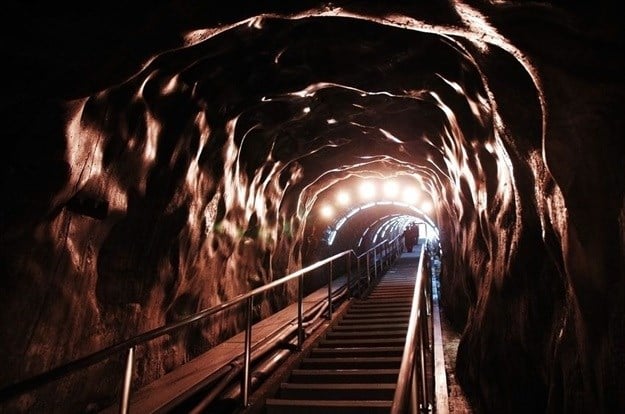
Rehabilitation funds tax plan leaves regulations gap

The National Environmental Management Act of 1998 places the responsibility for remediating environmental damage, pollution or ecological degradation arising from mining operations on mining companies as the holders of prospecting or mining rights.
Mining companies have to make financial provision for the rehabilitation of the environment, using financial guarantees, cash payments to a Department of Mineral Resources bank account or cash payments to special purposes companies or trusts (mining rehabilitation funds).
Tax relief is available to mining companies for payments to mining rehabilitation funds: the Income Tax Act gives a company a tax deduction for cash payments to these funds. It also exempts the growth in these funds from tax, provided the mining company complies with the requirements of section 37A of the act. The government considers that mining rehabilitation funds are being abused, and recently published draft tax legislation to amend section 37A. The aim is to strengthen "anti-avoidance measures" related to the funds.
Abuses in the mining industry include the transfer of mining rehabilitation fund money to third parties who are not approved recipients in terms of section 37A(3).
An example of such abuse relates to Tegeta Exploration and Resources, which acquired Optimum Coal Mine and inherited Optimum Coal's rehabilitation funds. Impermissible withdrawals were allegedly made from Optimum Coal Mine's rehabilitation funds.
The draft legislation focuses on "curbing current and continued abuse of rehabilitation funds", but misses the opportunity to align the draft tax legislation with the 2015 Financial Provisioning Regulations published under the National Environmental Management Act.
The regulations and the draft tax legislation are not fully aligned. The regulations allow withdrawals from a mining rehabilitation fund for continuing and current rehabilitation. The draft tax legislation grants tax relief only if the funds in a mining rehabilitation fund are used for rehabilitation in specific circumstances: premature closure, decommissioning or final closure of a mining area, and postclosure management of the latent or residual environmental impacts.
Another area of misalignment between the regulations and the draft tax legislation is the permissible use of the mining rehabilitation funds upon achieving final closure. When rehabilitation has been completed to the satisfaction of the minister of mineral resources, section 37A does not allow the use of the mining rehabilitation funds for other purposes. The fund must be liquidated after all liabilities have been settled. The remaining assets must be transferred to another account or trust that has rehabilitation as its sole object and has been approved by the minister.
Section 37A does not contemplate that the money in a rehabilitation fund can be transferred to the minister, back to taxpayers or to an account or trust that is not a mining rehabilitation fund. But the regulations provide that once final closure has been achieved, the trustees of a mining rehabilitation fund must authorise the payment of the remaining funds to the minister, to be used for latent or residual environmental impacts.
In such a case, compliance with the regulations will contravene section 37A, triggering a tax liability for the mining company. These misalignments and contradictions on such important issues should be clarified urgently.
The regulations also prescribe the form and requirements of a trust deed to be used for a mining rehabilitation fund.
A specimen trust deed contains a clause restricting the types of financial instruments that mining rehabilitation funds can invest into "capital guaranteed" instruments. This term is not defined.
The permissible investments listed in section 37A are specified, but these are financial instruments issued by collective investment schemes; long-term insurers, banks or mutual banks, listed companies or the government, or investments acquired before November 18 2003. The instruments listed are not necessarily capitalguaranteed instruments. It cannot be determined whether or not an instrument is a capital-guaranteed investment without considering the facts of each investment.
The draft tax legislation proposes stricter penalties for impermissible investments, impermissible withdrawals from the fund and other contraventions of section 37A.
If a mining rehabilitation fund makes investments that are not allowed in terms of section 37A(2), 40% of the highest market value of the impermissible investment will be deemed to be an amount of normal tax payable by the mining company, not the mining rehabilitation fund.
If a mining rehabilitation fund allows its property to be distributed for impermissible purposes, the fund will pay a deemed amount of normal tax equal to 40% of the highest market value of that property.
An impermissible withdrawal is one for any purpose other than: rehabilitation upon premature closure; decommissioning and final closure; postclosure coverage of any latent and residual environmental impacts; or transfer to another company, trust or account established for rehabilitation.
If a mining rehabilitation fund fails to comply with any other provision of section 37A, the fund will also pay a penalty that will be a deemed amount of normal tax. This deemed amount must be equal to 40% of twice the highest market value of all the property held in that company (or trust), to the extent that the other property is directly or indirectly derived from cash paid by the mining company to the mining rehabilitation fund.
The adequacy of financial provision made for rehabilitation is another issue at stake. Section 24P(3) of the National Environmental Management Act already requires mining companies to submit an annual report to the minister on the adequacy of the financial provision.
More work is required to align the proposed tax amendments with existing laws regulating financial provision for environmental rehabilitation.
Source: Business Day
Source: I-Net Bridge

For more than two decades, I-Net Bridge has been one of South Africa’s preferred electronic providers of innovative solutions, data of the highest calibre, reliable platforms and excellent supporting systems. Our products include workstations, web applications and data feeds packaged with in-depth news and powerful analytical tools empowering clients to make meaningful decisions.
We pride ourselves on our wide variety of in-house skills, encompassing multiple platforms and applications. These skills enable us to not only function as a first class facility, but also design, implement and support all our client needs at a level that confirms I-Net Bridge a leader in its field.
Go to: http://www.inet.co.zaAbout Betsie Strydom and Wandisile Mandlana
Strydom is a partner, tax practice and Mandlana is a partner, mining regulatory practice, at Bowmans.















